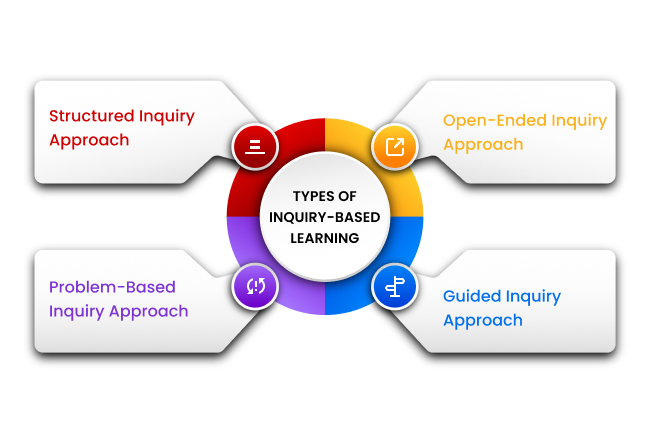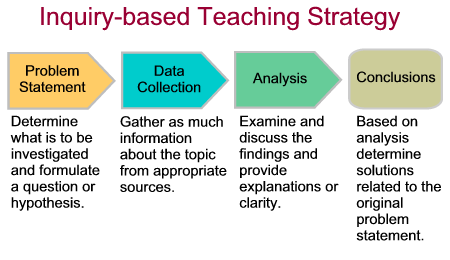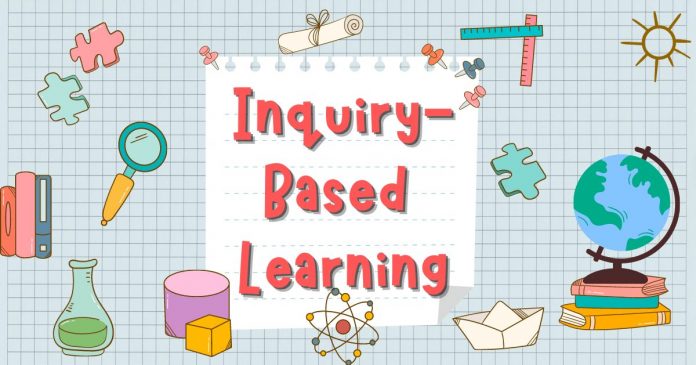Are you looking for a teaching strategy that involves students more deeply in the learning process? Inquiry-based learning might be the approach you need. It focuses on encouraging students to ask questions and explore real-world issues, making learning more active and relevant across various subjects.
Math & ELA | PreK To Grade 5
Kids see fun.
You see real learning outcomes.
Watch your kids fall in love with math & reading through our scientifically designed curriculum.
Parents, try for free Teachers, use for free
This blog will cover the key benefits of inquiry-based learning and offer practical strategies and models for implementing it in your classroom.
What Is Inquiry-Based Learning?

Inquiry-based learning is a student-centered teaching method that encourages students to ask questions and investigate real-world problems. In this type of learning environment, students are actively engaged in the learning process and are given the opportunity to explore their natural curiosities.
This type of learning is often hands-on and allows students to connect what they learn in the classroom and the real world. Inquiry-based learning has been shown to improve critical thinking skills, problem-solving skills, and creativity.
The 4 Types of Inquiry-Based Learning

There are four types of inquiry-based learning:
1. The Structured Inquiry Approach
The structured inquiry approach is a sequential process that helps students learn how to ask questions and investigate real-world problems. This type of inquiry-based learning is often used in science classes, where students are given a problem to investigate and are taught how to use the scientific process to find a solution.
2. The Open-Ended Inquiry Approach
The open-ended inquiry approach is a more free-form approach to inquiry-based learning. In this type of learning environment, students are given the freedom to explore their interests and ask questions about the topic they are studying. This type of inquiry-based learning is often used in humanities classes, where students are asked to explore a topic in-depth and debate different viewpoints.
3. The Problem-Based Inquiry Approach
A problem-based inquiry approach is a problem-solving approach to inquiry-based learning. In this type of approach, students are given a real-world problem to solve. This type of inquiry-based learning is often used in mathematics and engineering classes, where students are asked to apply what they have learned to solve a real-world problem.
4. The Guided Inquiry Approach
The guided inquiry approach is a teacher-led approach to inquiry-based learning. In this type of approach, the teacher guides the students through the inquiry process and helps them to ask questions and find solutions to real-world problems. This type of inquiry-based learning is often used in elementary and middle school classrooms.
Now that we have a better understanding of the different types of inquiry-based learning, let’s take a look at the benefits.
7 Benefits of Inquiry-based Learning
- Encourages Critical Thinking: Students question information and develop their own solutions, enhancing critical thinking and problem-solving skills.
- Improves Problem-Solving Skills: By exploring real-world problems, students learn to think creatively and develop solutions.
- Encourages Creativity: Independent exploration fosters creative thinking and innovative solutions.
- Improves Communication Skills: Explaining ideas during problem-solving improves students’ communication abilities.
- Connects Learning to the Real World: Students see the relevance of classroom learning through real-world problem exploration.
- Helps Understand Complex Topics: Hands-on exploration aids in grasping complex subjects more deeply.
- Encourages Engaged Learning: Active involvement in learning leads to better retention and deeper investment in the material.
5 Inquiry-based Learning Examples
1. Science Experiments
One way to incorporate inquiry-based learning into your classroom is to allow students to conduct experiments. This activity will encourage them to ask questions and think critically about the results.
2. Field Trips
Another activity to encourage inquiry-based learning is to take students on field trips. This will allow them to explore real-world problems and see how what they are learning in the classroom is relevant.
3. Classroom Debates
Classroom debates are another great way to encourage this type of learning. When students debate a topic, they are forced to think critically about both sides of the argument.
Related Reading: Interesting Debate Topics for Kids of All Ages & Grades
4. Projects
Projects are another great way to encourage inquiry-based learning. When students are given the opportunity to work on a project that is related to the topic they are studying, they will be more likely to learn and remember the information.
5. Group Work
When students work in groups, they are able to share their ideas and thoughts with others. This activity helps them to understand the material better.
5 Strategies and Tips for Implementing Inquiry-Based Learning

Now that we have looked at the benefits of inquiry-based learning and some examples, let’s look at some inquiry-based strategies and tips that you can use in your classroom.
1. Start with a Question
The best way to start an inquiry-based lesson is by asking a question. This will get students thinking about the topic and will encourage them to ask their own questions.
2. Allow for Exploration
Once you have asked a question, allow students to explore the topic on their own. This will help them to understand the material better.
3. Encourage Discussion
Encourage students to discuss their ideas with each other. This will help them to develop a better understanding of the material.
4. Provide Resources
Be sure to provide students with resources that they can use to explore the topic. This will help them develop a better understanding. Teachers can also give access to online learning platforms like SplashLearn, which further help enhance the knowledge of the concepts.
5. Summarize What Was Learned
At the end of the lesson, be sure to summarize what was learned. This will help students to remember the information.
You can use different models to encourage inquiry-based learning in your classroom. The important thing is that you allow students to be actively involved in the learning process. Let’s have a look at a few models that you can use.
4 Models To Use In The Classroom
Now that we have looked at the benefits of inquiry-based learning and some strategies for implementing it in your classroom, let’s take a look at four models you can use.
1. The Question Model
The question model is one of the most basic models for inquiry-based learning. It involves asking students questions about the topic you are teaching. This will encourage them to think critically about the material.
2. The Problem-Based Learning Model
The problem-based learning model is another excellent option for inquiry-based learning. This model involves giving students a problem to solve. They will need to think critically about the problem and find a solution.
3. The Project-Based Learning Model
Project-based learning is a great way for students to explore a topic in depth. This model involves giving students a project to work on that is related to the topic you are teaching.
4. The Inquiry Cycle Model
With the inquiry cycle model, students are given the opportunity to ask questions, investigate a topic, and then share their findings. This model allows students to explore a topic in-depth and share their discoveries with others.
Conclusion
Inquiry-based learning is a powerful teaching method that actively engages students, fosters critical thinking, and connects classroom learning to real-world situations. By implementing the strategies and models discussed, educators can create a dynamic and stimulating learning environment that encourages exploration and deep understanding.
Frequently Asked Questions (FAQs)
What is the importance of inquiry-based learning?
Inquiry-based learning is important because it allows students to explore and ask questions about the world around them. This type of learning helps students develop critical thinking and problem-solving skills.
What is the definition of inquiry-based learning?
Inquiry-based learning is a type of active learning that encourages students to ask questions, conduct research, and explore new ideas. This approach to learning helps students develop critical thinking, problem-solving, and research skills.
What are the roles of students in inquiry-based learning?
In inquiry-based learning, students take on the role of researcher. They are encouraged to ask questions and explore new ideas. Students also have the opportunity to share their findings with their classmates and learn from each other.
How do you plan an inquiry-based lesson?
Inquiry-based lessons are typically designed around a central question or problem. From there, teachers can provide resources and scaffolding to help students investigate the topic. It is important to leave room for student exploration and allow them to ask their own questions.
What are the five guiding questions of inquiry?
The 5 guiding questions of inquiry are:
- What?
- So what?
- Now what?
- How?
- Why?
Do inquiry-based and project-based learning have to be the same thing?
No, inquiry-based and project-based learning are two different approaches. Inquiry-based learning is focused on student-driven research and exploration. Project-based learning is focused on students working together to complete a real-world project. However, both approaches can include elements of inquiry and problem-solving.
What are the 4 phases of inquiry-based learning?
The four phases of inquiry-based learning are:
1) Orientation
2) Conceptualization
3) Investigation
4) Conclusion
What is the role of a teacher in inquiry-based learning?
In inquiry-based learning, the teacher acts as a facilitator and guide, encouraging student curiosity, providing resources, and supporting students in developing their own questions, conducting investigations, and drawing conclusions.
























